|
All the participants, who took part in the expeditions, were felicitated by Chief of the Naval Staff Admiral Robin Dhowan at Rajpath here September 20.
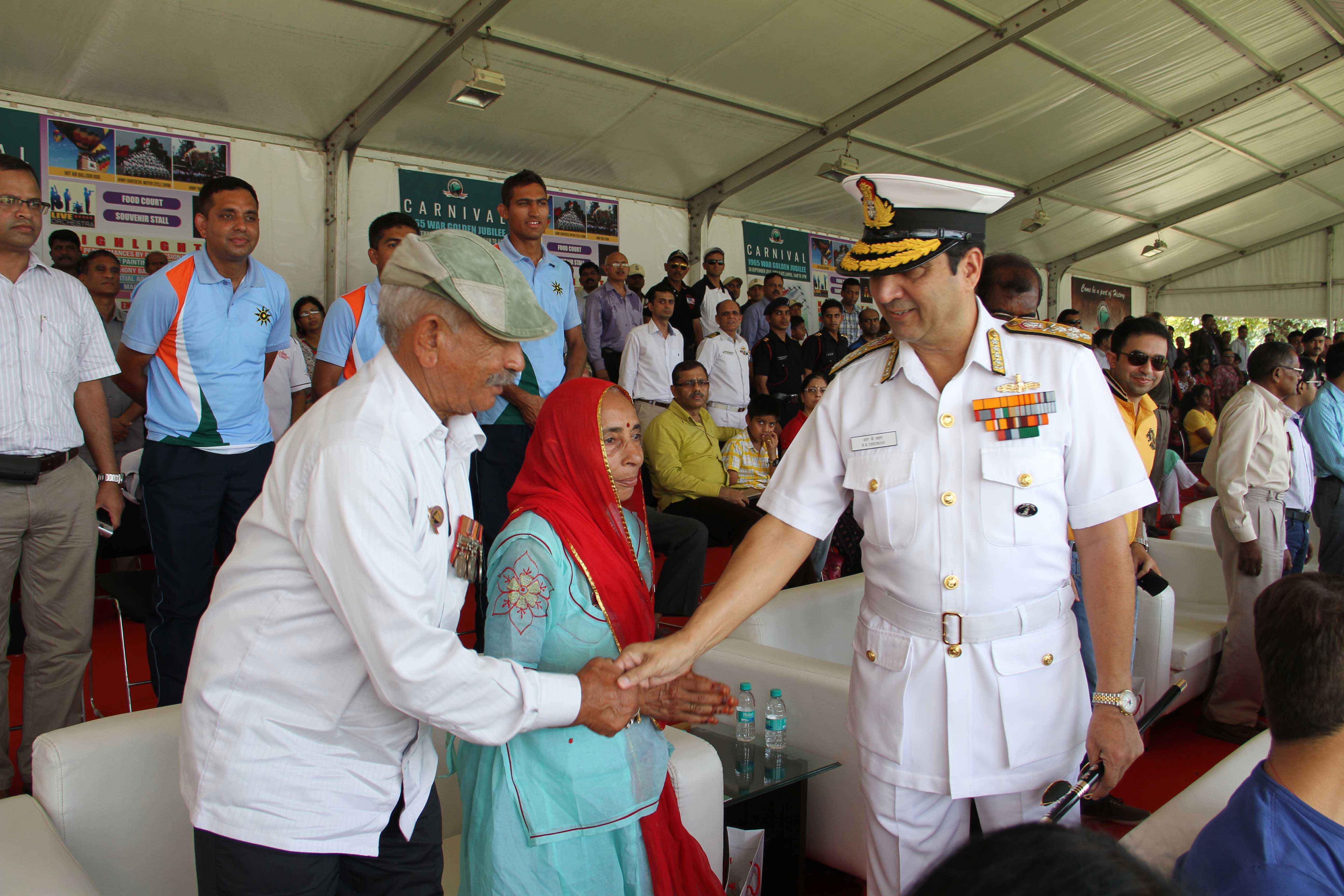
The aim of the expeditions was to spread awareness about the role played by Indian Navy in the conflict amongst the local populace across the entire stretch from the eastern sea front to the coast of Gujarat and up to Zanskar region in the north.
An eight member team of Naval mountaineers led by Lt Commander S Karthkeyan scaled Mount Kun in the Zanskar region on September 10. Mt Kun is a technical peak at a height of 7077 metres. Arduous terrain, tough weather conditions and ice capes prone to crevasses and other hazards challenged the mountaineers for the entire route. This feat incidentally coincides with the Golden Jubilee year of the first ever successful mountaineering expedition to Mount Everest led by Captain M S Kohli of the Indian Navy.
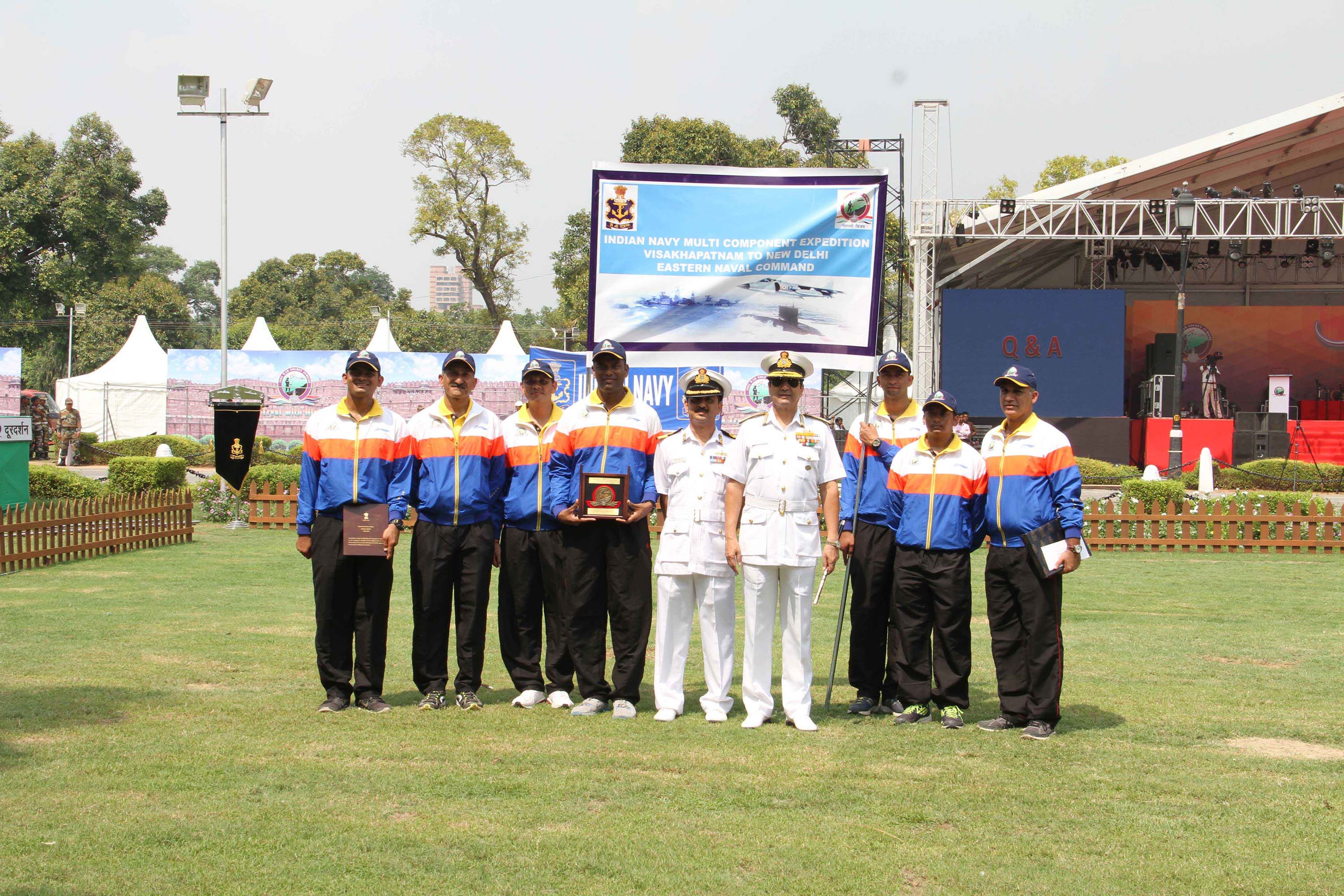
The second expedition which originated from Visakhapatnam comprised of three components. The first phase was the ocean sailing from Visakhapatnam to Kakinada. The Sailing team charted the wreckage of PNS Ghazi, the Pakistan Navy submarine which participated in the 1965 war and was sunk off the Visakhapatnam coast during the 1971 war. The second phase i.e. the motorcycle expedition covered 2,000 km over a period of nine days across six States and Union Territories. The expedition team also met ex-servicemen from the three Services who had participated or been in Service during the 1965 war so as to have a firsthand account and learn from their experience. The bicycle component in the third phase was intended to deliver the message about commitment of the Armed Forces towards green and renewable sources of energy.
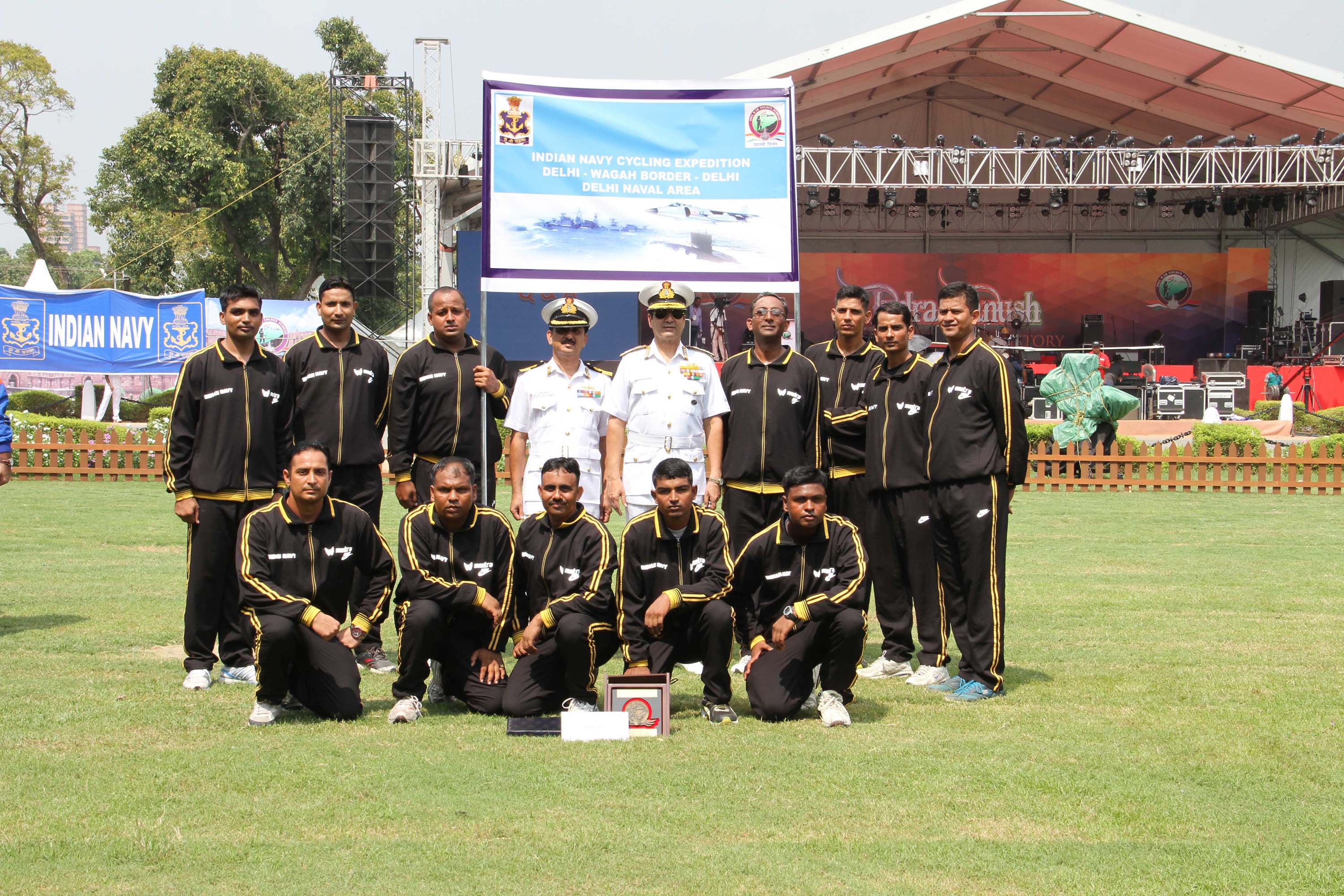
A Joint Motor Cycle rally was organised from the coast of Gujarat. The 18-member team comprising members from all Naval stations in the Gujarat region was flagged off from Okha September 12 by Lt Gen Mahipat Sinjhi, a 1965 war veteran. The team undertook the expedition from Dwarka to Delhi passing through Ahmedabad, Udaipur, Ajmer and Jaipur covering an approximate distance of 1,500 km in six days. The team also interacted with several 1965 war veterans and ex-servicemen enroute.
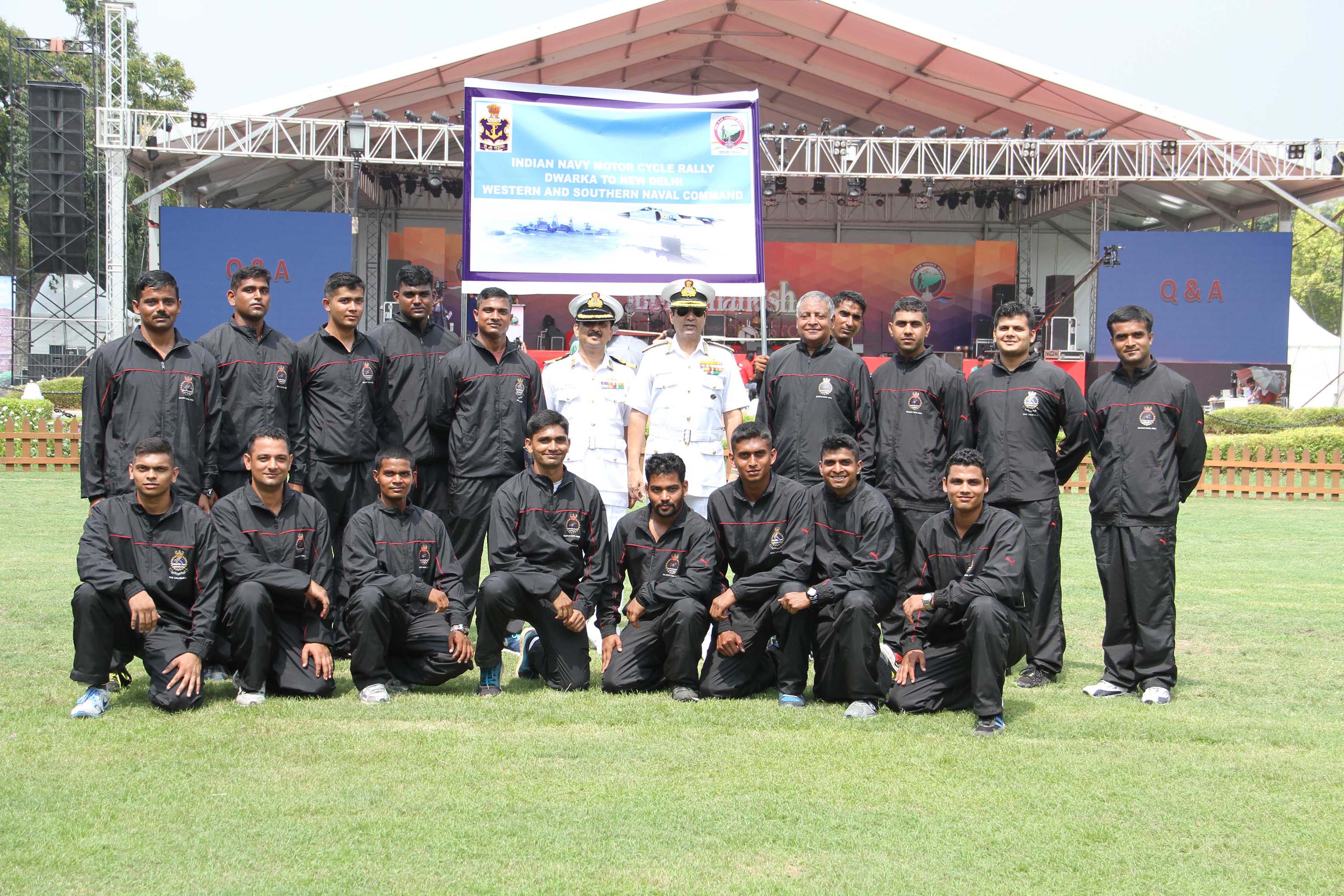
The adventure enthusiasts from Delhi Naval Area embarked on a 10-day cycle expedition from Delhi to Wagah border and back covering a total distance of about 1000 km. The 14-member team led by Surg Cdr G Parthasarathy reached the Wagah border September 11 and witnessed the Beating the Retreat ceremony. The team interacted with the local populace in Haryana and Punjab spreading the message about the 1965 victory and received a lot of public and media attention. The team was also felicitated at CRS University, Jind.
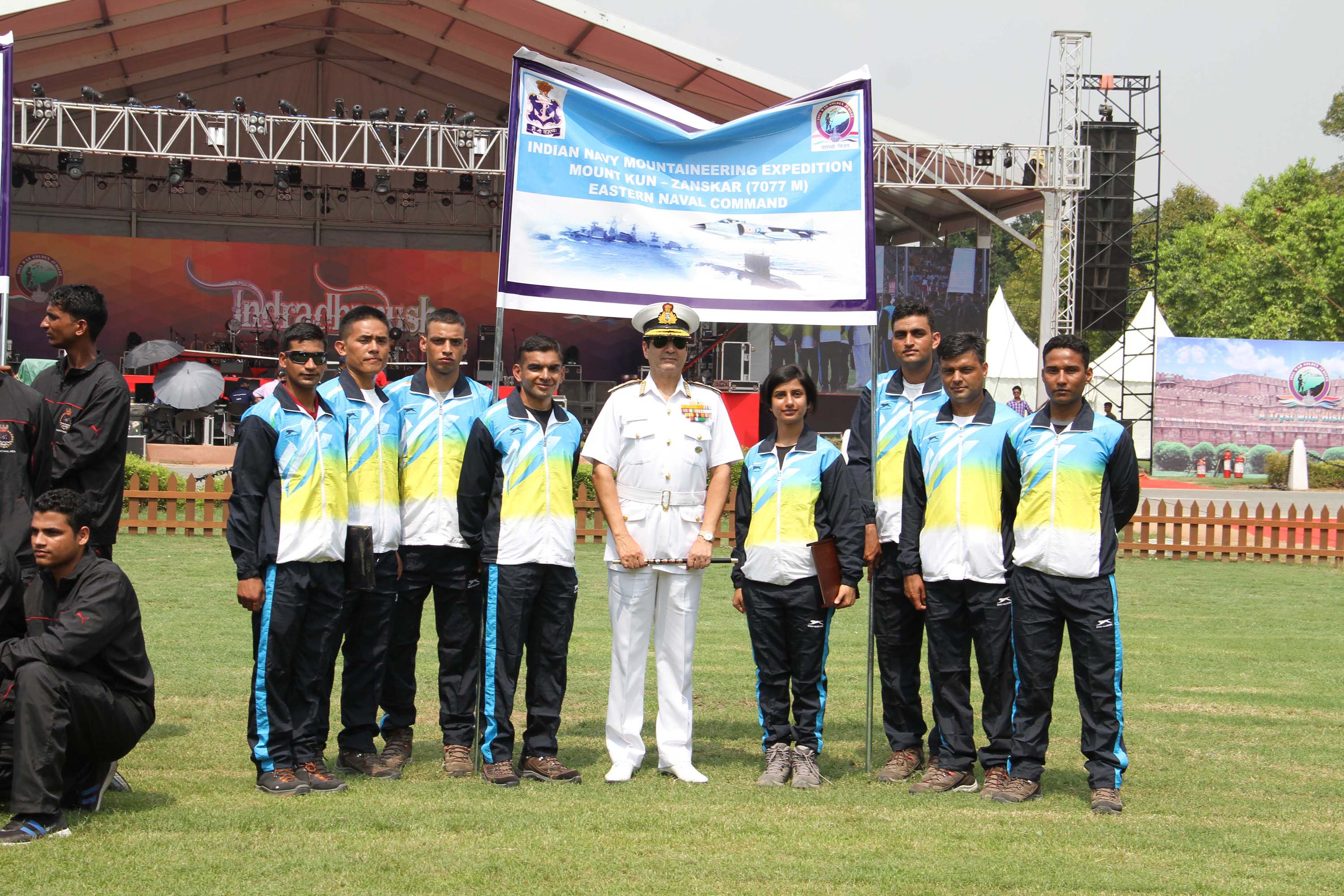
As we commemorate the 1965 war and the many martyrs who laid down their lives in the defence of the nation, the Indian Navy continues to remain as vigilant as ever in performing its role of maritime defence of the Western and Eastern Coasts and the country’s Island territories. The Navy, which had a total of 36 ships and about 120 aircraft of various types in 1965, underwent a major modernisation and the next few years saw the induction of missile boats, submarines, anti-submarine warfare helicopters, new bases, indigenous ships construction programme and the formation of a second Fleet. In the next war itself, the Navy struck hard in both theatres, with its two Fleets, in a fully integrated and joint manner with the Indian Army and Air Force. The Navy is today potent force substantially larger than what it had in 1965, coupled with a manifold increase in its combat capability.
|